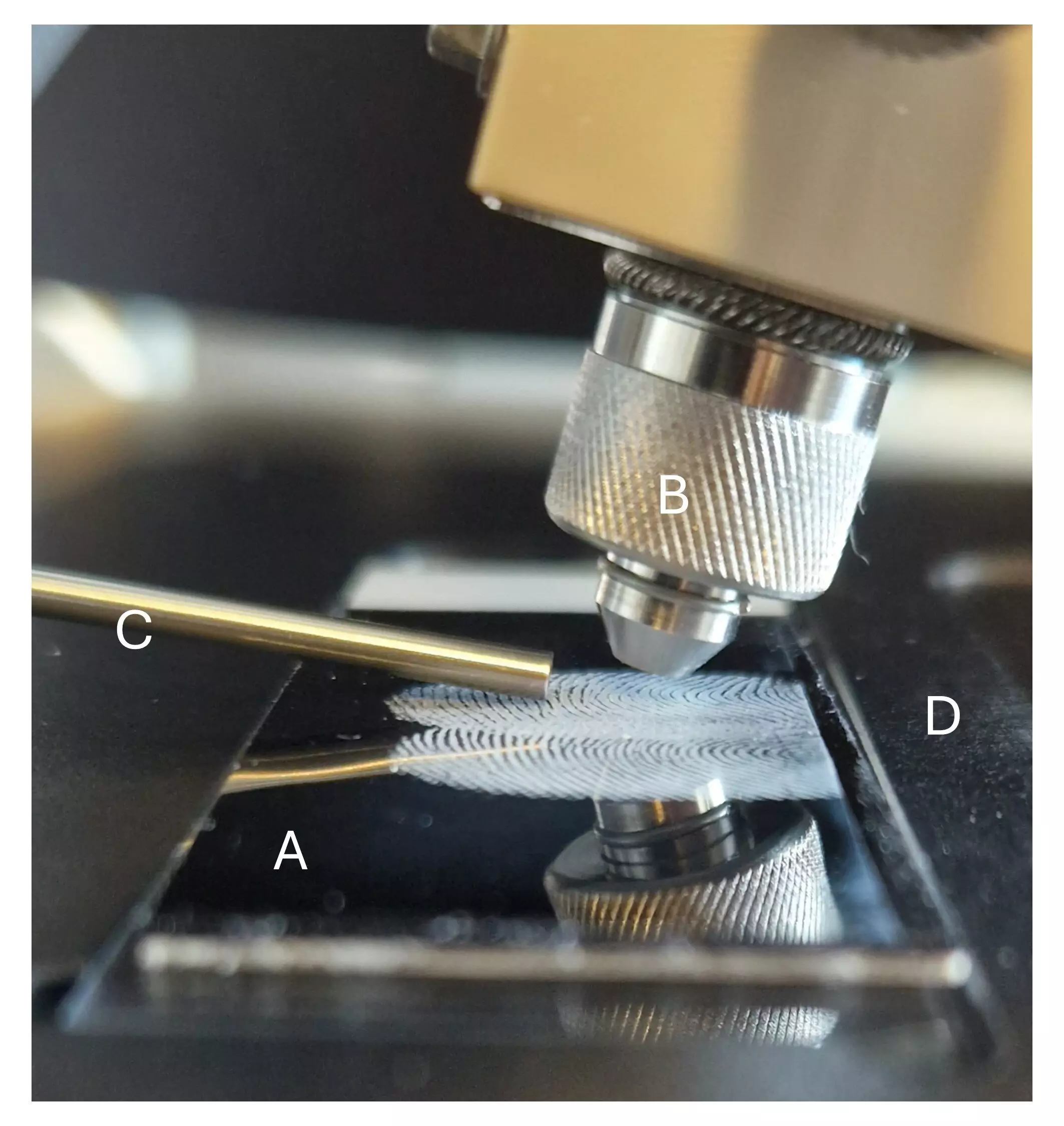Recent developments in forensic science, particularly from Aarhus University’s Department of Forensic Medicine, are poised to transform how law enforcement agencies process fingerprints collected in criminal investigations. Researchers have introduced a groundbreaking technique that employs chemical imaging to analyze fingerprints on gelatin lifters, marking a significant leap forward in this domain. This method is particularly relevant in an era where traditional methods often fail to deliver comprehensive results in cases involving delicate or overlapping prints found at crime scenes.
Traditionally, law enforcement has relied on gelatin lifters, which are favored for their ability to collect fingerprints from fragile surfaces like peeling paint or textured objects, including door handles. These lifters provide a viable alternative to tape, which often fails on irregular surfaces. However, challenges remain: standard photography techniques used to document fingerprints can struggle with overlapping imprints, often leading to the loss of crucial evidence. This flawed aspect of photographic documentation necessitates innovative solutions that the new study promises to offer.
At the heart of this pioneering research is the method known as Desorption Electrospray Ionization Mass Spectrometry (DESI-MS). This sophisticated technique measures the unique chemical profiles of fingerprint residue, which could facilitate the disambiguation of overlapping prints while also enhancing even the faintest of impressions. According to Kim Frisch, the study’s lead researcher, “Our method has the potential to be integrated into existing police workflows. This could allow for the retrieval and evaluation of a broader range of fingerprint evidence.”
Applying DESI-MS to forensic analysis is not entirely new, having been previously tested on prints from glass and tape surfaces. However, researchers have now established its efficacy on gelatin lifters—an essential step forward in adapting advanced scientific techniques for practical police work. By capturing detailed chemical compositions from fingerprints, this method not only improves the clarity of evidence but also broadens the scope of information that can be gathered from what may have seemed useless material at first.
Overlapping fingerprints have historically posed a significant problem for forensic investigators, often resulting in the loss of valuable evidence. The latest study indicates that DESI-MS can effectively differentiate between these complex scenarios and amplify the details of faint prints that optical imaging fails to capture. Initial tests have been promising, with laboratory simulations showing good results. The next step will involve assessments on actual crime scene fingerprints, in collaboration with the National Special Crime Unit of the Danish Police.
The investigation aims to further analyze the chemical makeup of fingerprints, revealing that they are not merely unique patterns but repositories of significant biochemical information. For instance, beyond typical characteristics such as ridge patterns, fingerprints can reveal substances reflecting a person’s behavior or environment, including traces of nicotine, caffeine, and even illicit drugs. Therefore, the implications of this research extend beyond identification; they offer potential insights into an individual’s lifestyle, health, and behavior.
As researchers continue to develop this technique, the future of fingerprint analysis in forensic science appears increasingly promising. There is a growing recognition that chemical imaging could play an invaluable role in criminal investigations by not just linking individuals to crime scenes but also potentially providing a profile of their recent activities or exposures.
Numerous studies have indicated that chemical analyses of fingerprints can help shed light on factors such as age, gender, health conditions, and even dietary habits. By expanding upon this foundation, the Department of Forensic Medicine at Aarhus University is contributing to a broader understanding of forensic applications that translate scientific discovery into real-world utility.
In the pursuit of maximizing the information derived from fingerprints, collaborations with law enforcement agencies are integral to ensuring that research continues to meet practical demands. The expectation is that this new method will soon see application in critical cases such as homicide and sexual assault investigations, where the stakes are incredibly high, and accurate identification is paramount.
The introduction of chemical imaging to analyze fingerprints on gelatin lifters is a remarkable advancement in forensic science, with the potential to significantly impact criminal investigations. By overcoming the limitations of traditional methods, this technique offers the promise of a more detailed and comprehensive understanding of fingerprint evidence and the individuals behind it. With rigorous testing and further development, it positions itself as an essential tool for law enforcement, ensuring that the complexities of crime scene evidence can be more effectively unraveled in the quest for justice.


Leave a Reply